Explore Our Resource Hub
Featured Blogs

logistics
Blog
August 28, 2025
Why a “Perfect Fit” TMS Beats Feature-Packed Systems
The right match unlocks efficiency, visibility, and cost control—without drowning in unused features Special Guest Blog Post written by e2open When picking a Transportation Management System (TMS), shiny features, slick dashboards, and buzzwords can be distracting. But here’s the truth: real ROI doesn’t come from having the most bells and whistles. It comes from finding a TMS that fits your transportation complexity like a glove. Too simple, and you’ll outgrow it before the ink is dry. Too complex, and you’ll be paying for tools you don’t use. Nail the fit, though, and other KPIs like cost savings, faster execution, and happier customers will slide into place. How to pick a TMS that fits your freight Carriers and LSPs running on legacy systems miss out on the real-time visibility and cost control a modern TMS delivers, leaving them slower, less efficient, and easier to undercut. Let’s unpack how to look beyond flashy features and choose a TMS that works for your business: Match complexity first. The biggest ROI driver is aligning your TMS with your transportation complexity. Get that right, and everything else follows. Consider adaptability and scalability. Your TMS should grow with you. Look…

travel
Blog
August 14, 2025
5 Questions I Would Like to be Asked About the Logistics Behind Traveling
Special Guest Blog Post written by Sofia Rivas Herrera One of my greatest joys is travelling around the world; learning about other cultures, ways of living and traditions. I often say that “everything is supply chain”, and this topic is no exception. When we plan a trip, we first start by defining origin and destination followed by when we want to travel and how. Then we evaluate how much we want/can spend and identify our non-negotiables, which start reducing the horizon of combinations and options we have. Does this sound familiar? In my mind this is very similar to processes within planning, procurement, network optimization and supply chain strategy. Here are 5 questions travel-related that I loved to be asked to help prove my point of this connection with supply chain: What is the best way to plan a trip? Planning a trip is no different than planning a new distribution model or redesigning your network. This process can look a bit like this: Define your route; origin and destination Identify your constraints: budget, time available, level of convenience and comfort, Run your optimization scenarios From there, you identify available lanes, available modes of transport, and available…
Recent Blogs
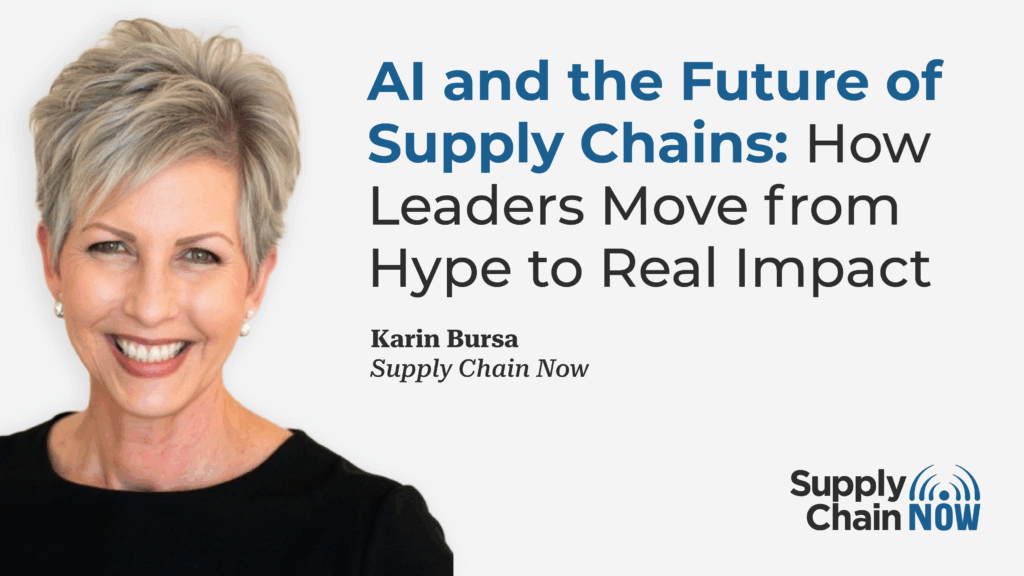
supply chain
Blog
December 11, 2025
AI and the Future of Supply Chains: How Leaders Move from Hype to Real Impact
Special Guest Blog Post written by Karin Bursa, Founder and CEO of NIRAKIO and Supply Chain Now Host Artificial intelligence is no longer a “what if” in supply chain — it is here. In fact, Gartner predicts that 50% of cross-functional supply chain management solutions will use intelligent agents to autonomously execute decisions in the ecosystem by 2030. But how do leaders move from hype to real impact? During our recent Supply Chain Now Power Panel, I asked five senior executives to share where they see AI making the biggest impact. Their answers revealed not just excitement, but a roadmap for how supply chains can evolve. Here is how they responded, in their own words. Q: Where do you see AI making the greatest impact in your supply chain? Eliza Simeonova – VP Global Supply, Mars Pet Nutrition “AI forces operational discipline. Clean data is no longer optional. The system itself demands it. I also see AI shaping supply chain synchronization — aligning suppliers, factories, warehouses, and customers in new ways.” Whitney Shlesinger – VP Global Planning & Logistics, McCormick “For me, it’s about people. Employees want to move beyond non-value-added work. AI allows us to free them up…

software
Blog
December 2, 2025
Top 10 Ways a Data Gateway Improves Time to Value Across End-to-End Supply Chains
Special Guest Blog Post written by Mark Holmes with InterSystems Top 10 Ways a Data Gateway Improves Time to Value Across End-to-End Supply Chains Supply chain practitioners seeking the best way to speed decision intelligence, unify supply chain data, increase operational efficiency, and improve supply chain resilience can benefit from a supply chain data gateway. A data gateway provides unified access to supply chain data from various sources, including enterprise systems, supply chain applications, data feeds, data warehouses, data lakes, data marts, and business entities. Here are the top 10 ways a supply chain data gateway can improve your supply chain performance. Enables You to Identify Inefficiencies and Make Better and Informed Decisions A unified view of your data accelerates informed decision making and provides you with a comprehensive understanding of your supply chain. For example, a supply planner gains accelerated access to customer orders, inventory levels, and transportation schedules, all in one place, to identify inefficiencies and make better informed decisions. Reduces Implementation Times Enterprises and supply chain software providers strive to reduce application implementation times. A data gateway can serve as a front-end for a range of supply chain software applications, speeding and simplifying data ingestion, integration,…
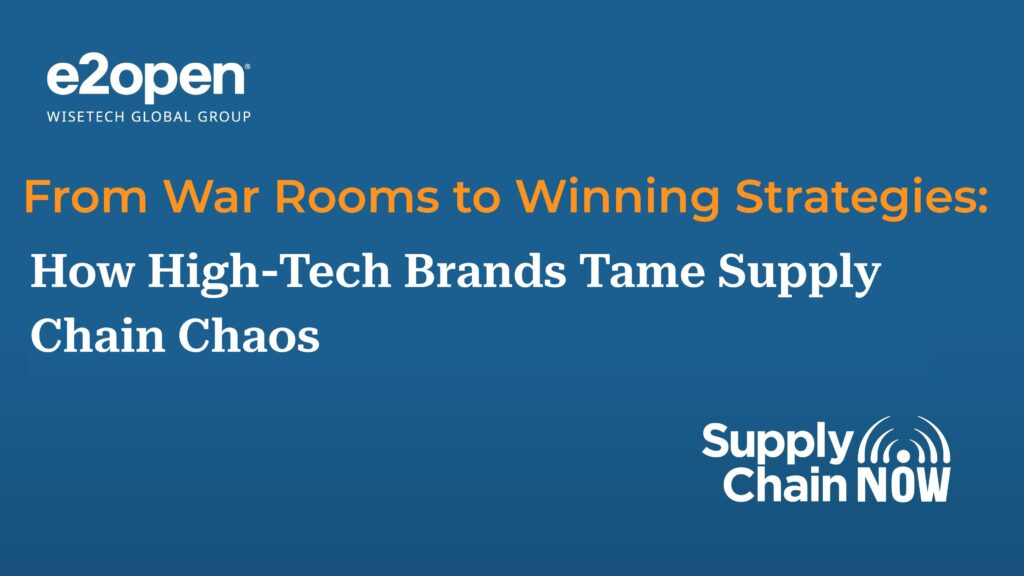
strategy
Blog
November 18, 2025
From War Rooms to Winning Strategies: How High-Tech Brands Tame Supply Chain Chaos
Special Guest Blog Post written by Jeff Echel and Steve Lykken with e2open Supply chain planners in high-tech don’t just manage shipments; they’re crisis managers, data detectives, and sometimes, referees in a high-stakes game of inventory tug-of-war. Why do these planners find themselves huddled in “war rooms,” surrounded by spreadsheets and urgent emails? It starts with relentless pressure: customers expect rapid, reliable service, but the reality is a maze of long lead times, outsourced manufacturing, and unpredictable global logistics. Securing critical components can take months, and a single misstep, like overstocking or missing a shipment, can ripple through the business, impacting revenue and margins. The chaos: War rooms and spreadsheet battles Add to that, the complexity of forecasting demand. Planners reconcile noisy, inconsistent data from retailers and distributors, often with little visibility, into . Forecasts are built, torn down, and rebuilt, sometimes manually, as teams try to align bottom-up channel data with top-down financial targets. Meanwhile, supply plans are constantly threatened by shortages, excess inventory, and last-minute changes. When demand surges or supply is disrupted, channels compete for limited stock, sometimes “stealing” from each other, and sometimes winning simply by being the loudest voice in the room. All of…

recruiting
Blog
November 11, 2025
5 Leading Supply Chain Recruiting & Executive Search Firms
To compete in today’s supply chain landscape, you need the best talent. We can’t overstate this enough. The talent competition is fierce and has increased due to the rapid onset of machine learning and artificial intelligence. If you don’t have a talent management partner who can accelerate your leadership placements, you run the risk of missing out on the best candidates and making a bad hire. It’s better to trust professionals who can commit a full-time approach to helping you find the supply chain leaders you need, rather than disrupt your own operations, hoping you have the right access and relationships to land the best talent. Here are 5 leading supply chain recruiting and executive search organizations: SCM Talent Group The key differentiator for SCM Talent Group and other supply chain recruiters is their decades of relationships, coupled with thought leadership. Founder and Managing Partner Rodney Apple helped to build out Home Depot and Coca-Cola’s supply chains more than 20 years ago. These decades of experience allow SCM Talent Group to better identify leaders who can help to transform supply chains into competitive advantages. Apple’s deep relationships in this niche industry have allowed his team to access hard-to-find talent pools…

Blog
November 6, 2025
Leading Transformation in the AI Era: Why Digital Success Starts with People
In today’s supply chain landscape, digital transformation is no longer optional—but as the panelists in the latest Supply Chain Now webinar revealed, it’s also not just about technology. Hosted by Scott Luton and Jake Barr, this conversation brought together two powerhouse leaders: Eliza Simeonova, Quality Supply Chain Operations Officer at Haleon, and Philip Vervloesem, Chief Commercial & Markets Officer at OMP. Together, they tackled one of the most pressing challenges of our time—how to lead meaningful, people-centered transformation in an age increasingly defined by AI. A few insights stood out: Technology isn’t the hero—people are. True digital transformation begins with clarity of purpose, disciplined simplification, and leaders who stay close to the work. AI amplifies human intelligence, it doesn’t replace it. The most successful organizations empower their teams to collaborate with technology, not compete against it. Waiting for perfection is the biggest risk. Progress comes from experimentation, agility, and the courage to act before every variable is known. From redefining leadership mindsets to practical strategies for upskilling teams, this discussion offered an inspiring roadmap for supply chain leaders ready to embrace what’s next. Watch the full webinar on demand: Register to view the replay »Download the companion resource: 5 Must-Know…

orchestration
Blog
November 4, 2025
Unifying Real-Time Data for End-to-End Supply Chain Orchestration
Special guest post written by Chris Cunnane with InterSystems Supply chain orchestration is the coordinated management of end-to-end supply chain activities, across planning, sourcing, production, logistics, and delivery, using technology, data, and processes to ensure that every moving part works together seamlessly. It enables organizations to attain an agile and resilient supply chain model through the use of decision intelligence. This is achieved through the See > Understand > Optimize > Act framework, which gives organizations the confidence to plan and respond to disruptions with assurance in their supply chain stability. See: gather raw data and information from your environment or a situation. Understand: analyze the information you’ve seen to build a comprehensive understanding of the context, your knowledge, and potential complexities. Optimize: develop the best possible solution or course of action to address the situation. Act: implement your chosen solution, putting your knowledge into practice. From a practical standpoint, this framework powers your supply chain application ecosystem with end-to-end visibility, insights, and better decisions. It helps organizations reach their supply chain goals by enabling them to align processes, stakeholders, and technology toward desired outcomes. The end result is reduced costs, improved operating margins, and optimized sustainability decisions, among others.…
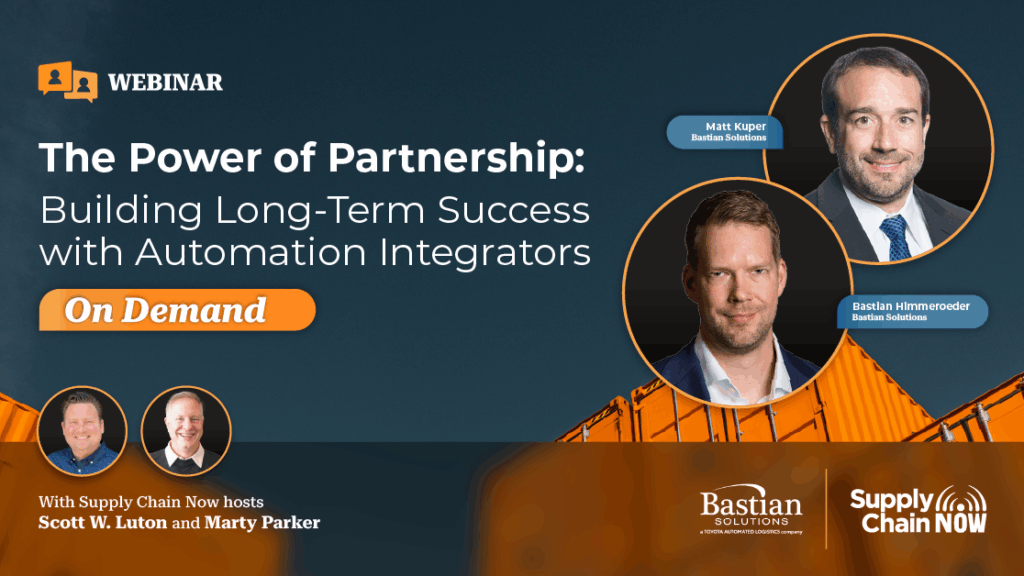
automation
Blog
October 30, 2025
The Power of Partnership in Supply Chain Automation
Key Takeaways from the Supply Chain Now Webinar with Bastian Solutions In today’s fast-changing world of logistics and manufacturing, one truth is clear: there’s no hiding from automation. Whether you’re a global enterprise or a growing regional player, success depends on choosing the right technology—and, just as importantly, the right partner. In a recent Supply Chain Now webinar, The Power of Supply Chain Partnerships, hosts Scott Luton and Marty Parker sat down with Matt Kuper and Bastian Himmeroeder from Bastian Solutions, a Toyota Automated Logistics company, for an in-depth conversation about how to unlock the true potential of automation through strong integrator relationships. Here are a few key takeaways that stood out: 1. Strategic Partnerships Trump One-Off Projects According to Bastian, the age of “one-and-done” automation projects is over. Today’s complexity demands long-term, strategic relationships between companies and their integrators—ones built on transparency, shared values, and a deep understanding of each other’s goals. 2. Culture Fit Matters as Much as Technology Matt emphasized that cultural alignment is the first critical element in selecting an integrator. Shared values, open communication, and mutual respect ensure that the partnership thrives well beyond implementation. 3. Experience and Support Drive Success Choosing a partner with…

leadership
Blog
October 28, 2025
Thriving in the Never Normal – Lessons Learned from 5 Women Supply Chain Leaders
Written by Karin Bursa, Founder and CEO of NIRAKIO and Supply Chain Now Host If you know me, you know I’m a supply chain nerd. I love talking about it, thinking about what’s next, and sharing success stories to inspire others who may feel overwhelmed or unsure where to start. So, when I stepped into the moderator’s chair for our recent Supply Chain Now livestream, I knew we were in for a powerful conversation. Five extraordinary women — each leading global supply chains at some of the world’s most iconic brands — came together to share how they are navigating disruption, embracing innovation, and shaping the future of supply chain leadership. As a fellow Woman in Supply Chain for over 30 years, I had to resist acting like a true ‘Fan Girl’ — I could have talked with them for hours. The world we live in is the “Never Normal.” Volatility is constant. Technology is advancing faster than our operating models. Yet, what struck me most during our panel was the optimism and resilience each leader displayed. These women are proof that even in the face of complexity, supply chains can be transformed into engines of business growth, agility, and…
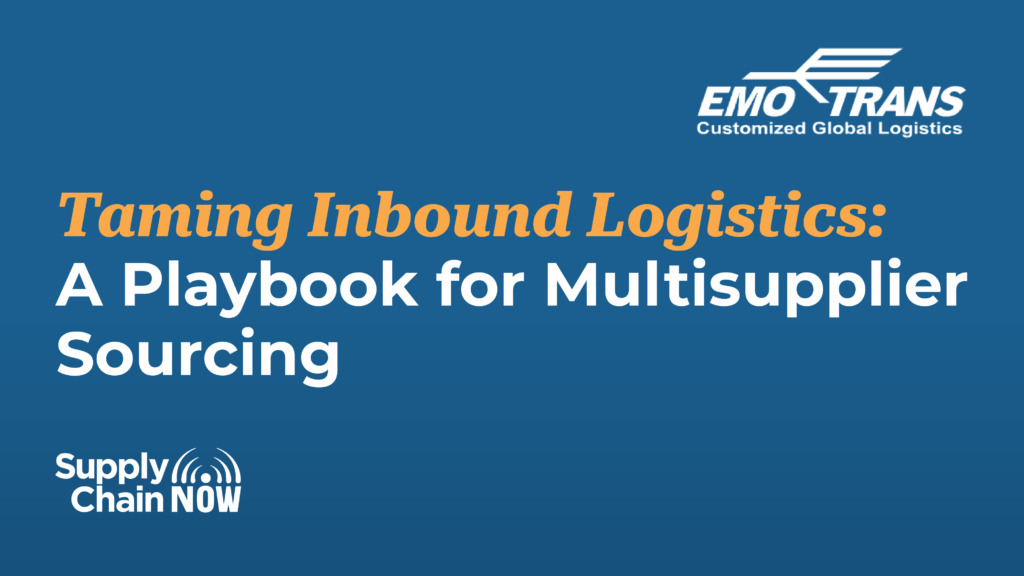
logistics
Blog
October 23, 2025
Taming Inbound Logistics: A Playbook for Multisupplier Sourcing
Special Guest Blog Post from Emo Trans The unpredictable economic landscape has produced unprecedented challenges within inbound logistics. Company leaders must navigate global disruptions and shifting consumer demands as they reshape their supply chains. Amidst the adversity, multisupplier sourcing has become a strategic advantage instead of a contingency plan. Follow this approach to equip business leaders with actionable insights. What Is Multisupplier Sourcing? Multisupplier sourcing involves purchasing products or services from two or more suppliers. This strategy differs from organizations using just one supplier. Diversifying the base requires establishing and managing relationships with multiple vendors. A robust network lets you be more agile as the market changes. Multisupplier sourcing has gained traction in the last five years. A 2022 McKinsey survey said 81% of companies implemented dual-sourcing strategies — an increase of 26 percentage points since 2020. Sixty-nine percent of respondents said this approach will continue to be relevant through the decade. The survey noted changes in inventory, sourcing and regionalization to boost resilience. Why Businesses Use Multisupplier Sourcing Increasingly complex supply chains have made businesses reevaluate traditional sourcing models. Multisupplier sourcing has emerged as a popular strategy to improve operational efficiency and resilience. Here are three key benefits that…

AI
Blog
October 21, 2025
Peak Season Logistics: How Smart Inbound Flow Drives Golden Quarter Profits
Special Guest Blog Post from e2open From demand sensing to dynamic allocation, here’s how leaders turn peak season logistics into profit Call it Q4, The Golden Quarter, or Peak Season—it’s the 100-day sprint through fall and winter holidays where profits soar, plans tighten, and one slip leaves you scrambling through January. Across peak season logistics, most companies obsess over outbound speed. Yet the real winners are brands that master inbound logistics flow months earlier. Getting the right inventory to the right locations isn’t glamorous, but it’s where the margins live. Every peak season playbook demands strategic evolution. Rerun last year’s strategy this quarter and you’ll sink—unless you’ve built sophisticated inbound logistics capabilities, airtight supplier partnerships, and precise forecasting to anticipate market shifts. With the right strategy, you can stride into the Golden Quarter. That means: Smarter forecasting that detects demand shifts before they hit Sharper allocation that puts inventory exactly where it’s needed Replenishment planning that maintains flow under pressure On Time in Full (OTIF) execution that keeps products moving and shoppers happy In peak season, accuracy wins. Miss inbound positioning, and your bottom line misses too. Inbound planning: The difference between stockouts and sales Golden Quarter demand…
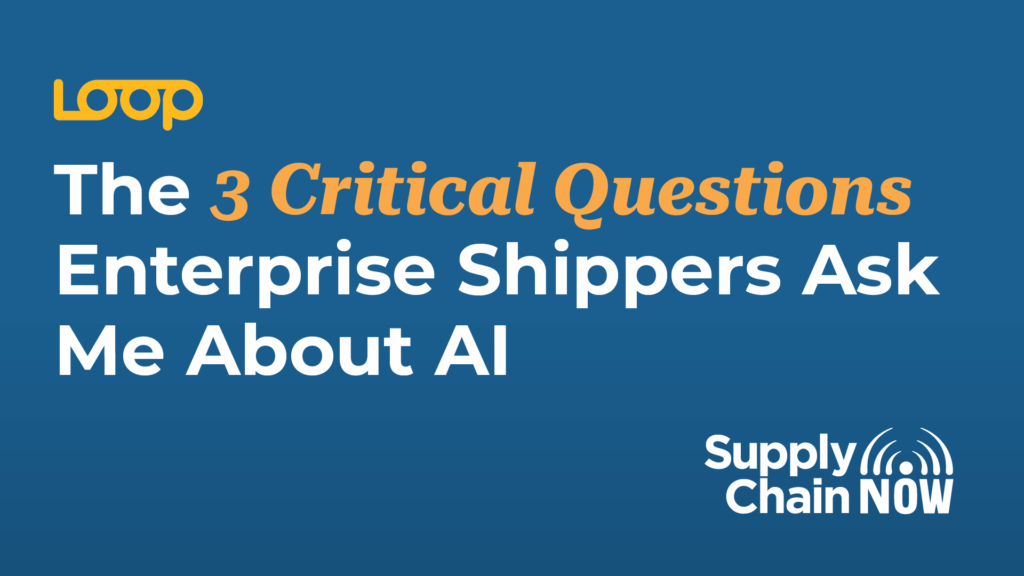
AI
Blog
September 25, 2025
The 3 Critical Questions Enterprise Shippers Ask Me About AI
Special Guest Blog Post written by Matt McKinney, Co-Founder and CEO of Loop I spend most of my time with supply chain and innovation leaders at major enterprises who are sitting on significant AI budgets but struggling to show measurable business impact in an increasingly complex and volatile supply chain environment. These conversations have evolved dramatically. A year ago, executives were asking basic questions about AI feasibility. Today, the questions have shifted to strategic implementation at enterprise scale. Based on hundreds of these discussions, three questions consistently emerge that separate companies making transformational progress from those stuck in pilot purgatory. How do we move from AI experiments to enterprise-scale impact? Most organizations have yet to see organization-wide, bottom-line impact from AI use. This is the strategic challenge keeping C-suite leaders awake at night. The problem isn’t the technology. It’s the application of the technology. Too many enterprises are trying to treat AI like a magic wand they can bolt onto existing systems. But garbage in, garbage out. If your underlying data is fragmented and inconsistent, AI won’t solve your problems; in fact they’ll get worse. At its core, anything automated is powered by…

transportation
Blog
September 23, 2025
How Hurricanes Disrupt Supply Chains: From Empty Shelves to Strategic Solutions
Special Guest Blog Post written by Jeff Eckel, Director of Product Marketing, e2open “Dad, why are they out of my favorite cereal?” your 10-year-old asks you at the grocery store, noticing that their favorite breakfast food is missing. The answer is more complex than they could imagine – hurricanes don’t just bring bad weather; they create far-reaching supply chain disruptions that affect everything from food to toys. Each hurricane season often brings catastrophic floods and wind damage. While communities will rebuild after the devastation, supply chains – the force behind keeping stores stocked – also experience powerful shocks beyond the storms’ path. The ripple effect of hurricanes across global trade The impact extends well beyond the immediate devastation. Critical port hubs for global trade close as hurricanes batter coastal regions. Cargo ships carrying essential goods like food, medical supplies, and consumer products must reroute or anchor offshore, waiting for storms to pass. This creates massive supply chain delays. Ports with backlogs of ships trying to dock and unload. Over-the-road and rail transportation networks face fallen trees, flooded roads, and damaged infrastructure that make movement difficult. Inland distribution centers face pressure Inland distribution centers – strategically located hubs where goods…

transportation
Blog
September 18, 2025
Freight Audit & Payment: The Anchor for Supply Chains in Turbulent Times
Special Guest Blog Post written by Bart A. De Muynck The past few years have exposed just how fragile our supply chains can be. From tariff shocks to pandemic disruptions, from inflationary pressures to mounting parcel surcharges, the landscape has shifted beneath our feet. Companies that once managed logistics as a back-office function are now grappling with its role as a front-line business risk. What’s often missed in this conversation is the role of freight audit and payment (FAP). Long considered a tactical necessity, FAP has quietly become a strategic imperative. And as I explored in the Better Supply Chains Market Radar: Freight Audit & Payment, the companies that treat it that way are the ones best equipped to weather today’s volatility. Why FAP Has Become Mission-Critical When tariffs can add 15–20% to input costs almost overnight, or when the elimination of the U.S. de minimis exemption threatens to reshape cross-border e-commerce, companies need more than visibility. They need real-time intelligence and agility. Traditional FAP approaches—manual audits, siloed spreadsheets, reactive error correction—are no longer sufficient. Modern FAP platforms, powered by AI and advanced analytics, enable shippers to: Audit with precision at scale, uncovering hidden…

travel
Blog
August 28, 2025
Why a “Perfect Fit” TMS Beats Feature-Packed Systems
The right match unlocks efficiency, visibility, and cost control—without drowning in unused features Special Guest Blog Post written by e2open When picking a Transportation Management System (TMS), shiny features, slick dashboards, and buzzwords can be distracting. But here’s the truth: real ROI doesn’t come from having the most bells and whistles. It comes from finding a TMS that fits your transportation complexity like a glove. Too simple, and you’ll outgrow it before the ink is dry. Too complex, and you’ll be paying for tools you don’t use. Nail the fit, though, and other KPIs like cost savings, faster execution, and happier customers will slide into place. How to pick a TMS that fits your freight Carriers and LSPs running on legacy systems miss out on the real-time visibility and cost control a modern TMS delivers, leaving them slower, less efficient, and easier to undercut. Let’s unpack how to look beyond flashy features and choose a TMS that works for your business: Match complexity first. The biggest ROI driver is aligning your TMS with your transportation complexity. Get that right, and everything else follows. Consider adaptability and scalability. Your TMS should grow with you. Look…

logistics
Blog
August 21, 2025
Hire, Onboard, Manage: Treating AI Agents Like New Team Members
Special Guest Blog Post written by Deborah Dull Imagine it’s launch season in your supply chain, and a team of AI agents is hard at work: coordinating shipments with suppliers, allocating inventory, and handling a missed delivery. It’s hard to go a day without hearing about the latest AI headlines: new LLMs, new applications, new use cases. These discussions are part of my every day. Business leaders and IT teams are eager to explore – and they have a lot of questions… and apprehension. In these discussions, we have found one framework that lands consistently: consider AI agents like new hires, not new software. Step 1: Hire Like You Mean It Just like hiring humans, this step is about defining what you need. The first decision is the purpose of the role: what problems are you trying to solve? Where are your people overwhelmed? Where is your business growing in coming months? From here, the next decision is to build the business case just like you would for a new headcount. For example, consider the ROI of having a digital employee who can process supplier performance data 24/7. Now, decide on the type of agent that will join…

logistics
Blog
August 14, 2025
5 Questions I Would Like to be Asked About the Logistics Behind Traveling
Special Guest Blog Post written by Sofia Rivas Herrera One of my greatest joys is travelling around the world; learning about other cultures, ways of living and traditions. I often say that “everything is supply chain”, and this topic is no exception. When we plan a trip, we first start by defining origin and destination followed by when we want to travel and how. Then we evaluate how much we want/can spend and identify our non-negotiables, which start reducing the horizon of combinations and options we have. Does this sound familiar? In my mind this is very similar to processes within planning, procurement, network optimization and supply chain strategy. Here are 5 questions travel-related that I loved to be asked to help prove my point of this connection with supply chain: What is the best way to plan a trip? Planning a trip is no different than planning a new distribution model or redesigning your network. This process can look a bit like this: Define your route; origin and destination Identify your constraints: budget, time available, level of convenience and comfort, Run your optimization scenarios From there, you identify available lanes, available modes of transport, and available…

automation
Blog
July 31, 2025
5 questions I frequently get asked about automating operations with AI
Special Guest Blog Post written by Parabola Founder & CEO, Alex Yaseen Operators are under pressure. They’re expected to move faster, do more with less, and somehow keep everything running smoothly while their systems, tools, and data are a mess. Now, AI is adding a whole new layer. On one hand, it’s exciting. The potential is real. On the other, a lot of teams feel stuck. They know they should be using AI, but they’re not sure where it fits into their day-to-day work. These are the five questions I get asked most often—whether someone’s trying to get started with automation, or trying to figure out how AI actually helps. 1. Can we automate this, or is it too messy? This question usually comes from someone deep in a spreadsheet that was never meant to scale. The short answer is: yes, you can probably automate it. But the longer answer is that you’ll need to rethink the process first. AI can help summarize, transform, and clean data—but it won’t fix a broken workflow. That’s on you. The best teams pair structured automation with lightweight AI to get leverage. Think: using rules and logic to standardize a workflow, and AI…
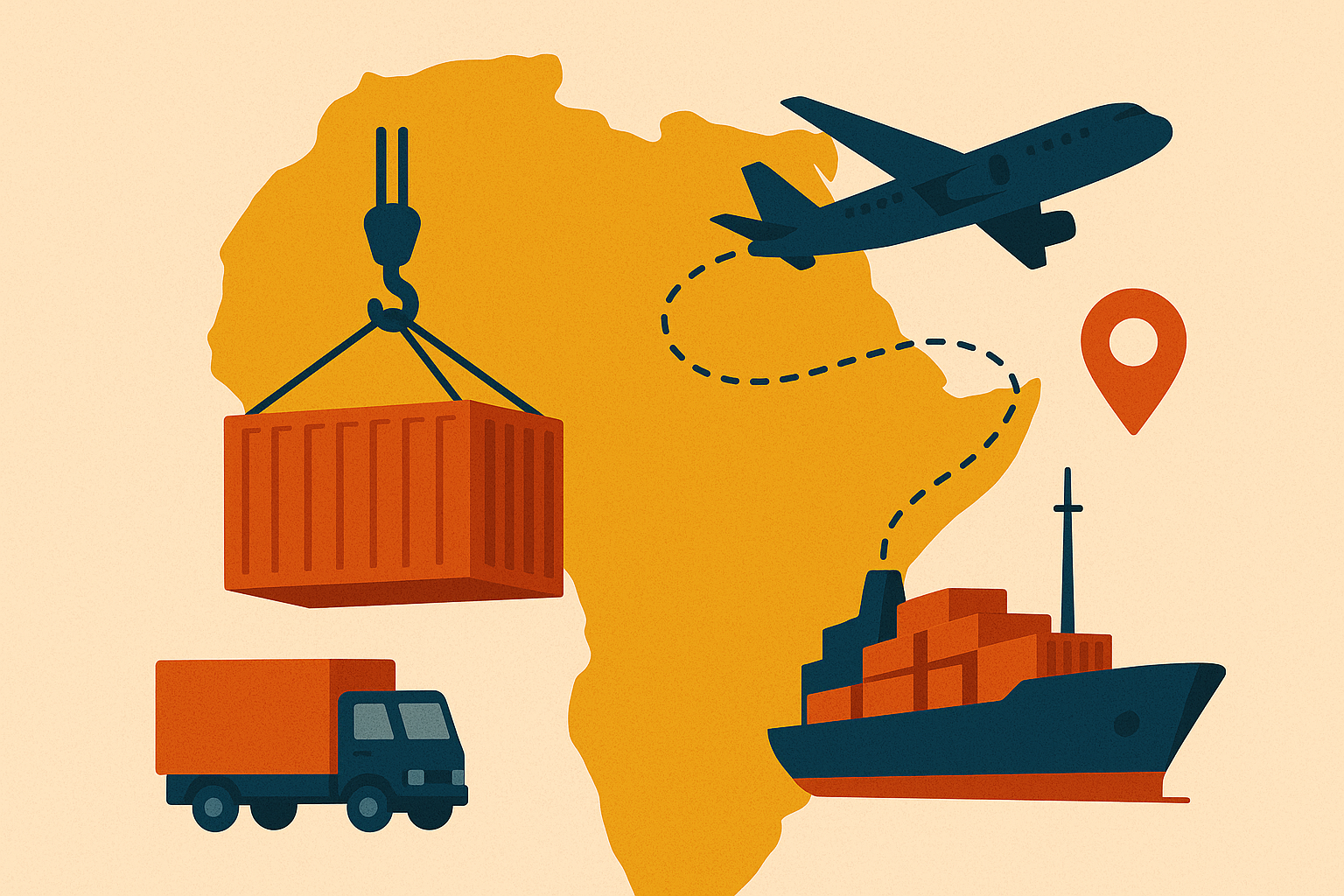
supply chain
Blog
July 25, 2025
The Future of Supply Chains Starts With Better Questions
Special Guest Blog Post written by Stela Jaqueta In today’s fast-changing world, Africa’s role in global supply chains is at a tipping point. For too long, the continent has been viewed primarily as a source of raw materials rather than as a strategic partner in value creation. But what if we reimagined everything, from policies and technologies to mindsets and sustainability practices, through an Africa-centered lens? In this blog post, I explore five questions that challenge conventional supply chain thinking. From redefining Africa’s place at the global negotiation table, to elevating cultural intelligence from “soft skill” to strategic necessity, to designing climate-restorative logistics and embracing the digital revolution in a way that includes youth-led and informal businesses, each question is a call to rethink, redesign, and re-center. 1. What would a truly Africa-centered global supply chain look like? A truly Africa-centered global supply chain would shift from a model of extraction to one of empowerment and value creation. It would prioritize investment in local manufacturing, infrastructure, and knowledge transfer, ensuring that raw materials sourced from Africa are processed, packaged, and innovated on the continent. African-led businesses are seen as power players, with a voice and authority at the negotiation…
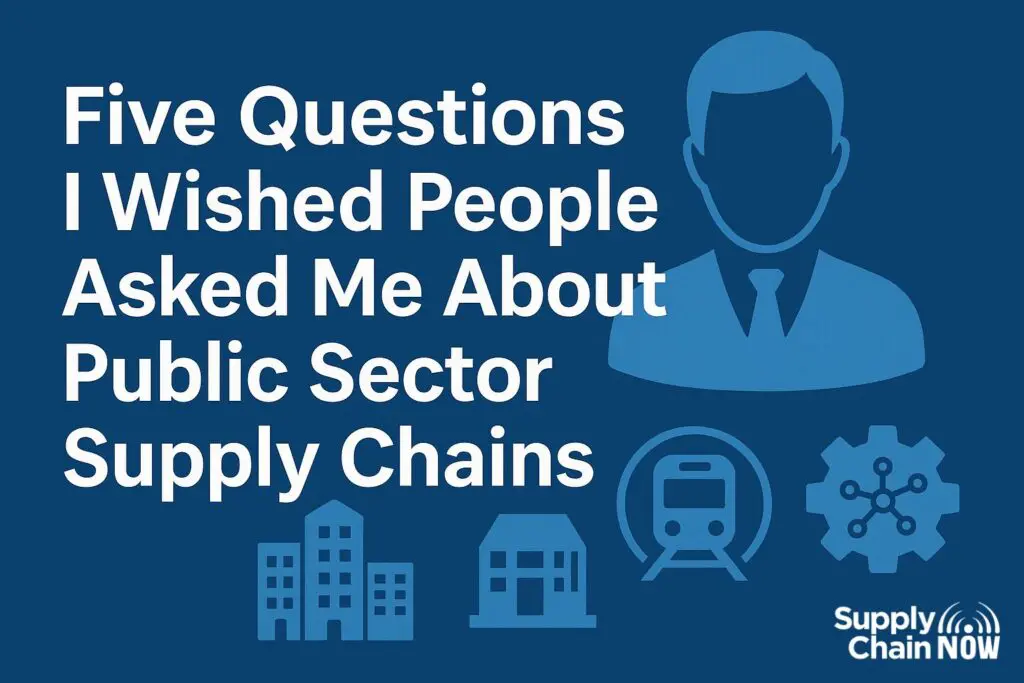
supply chain
Blog
July 10, 2025
Five Questions I Wished People Asked Me About Public Sector Supply Chains
Special Guest Blog Post written by Gary Smith, CPIM-F, CSCP-F, CLTD-F, Author of “The Bridge,” Supply Chain Engineer, and Educator 1. Do Supply Chains exist in the public sector? The short answer is “YES!” I spent the first 25 years of my career in the private sector where I worked in warehouse operations, industrial engineering, and consulting, all in the logistics andsupply chain area. I cut my teeth on retail, automotive, chemical, food and beverage, publishing, and manufacturing. During that time, I also completed projects for the public sector in education and for the Department of Defense. In 2005 I was named Director of Supply Chain Operations for the New York City Housing Authority (NYCHA). We operated a 200,000 sq. ft. warehouse that shipped repair material to 335 developments in New York’s five boroughs. In 2013, I was named Vice President of Supply Logistics for New York City Transit, the largest public transportation organization in North America. We operated over 1.5 million sq. ft. of warehouse space covering all of New York City. Several years ago, I was on a national committee for the Association for Supply Chain Management (ASCM). We created this elevator speech to describe Supply Chain…
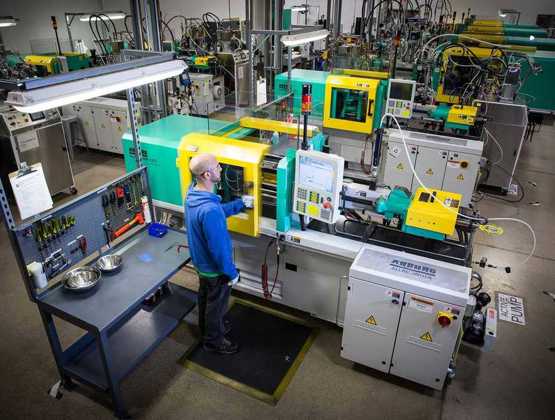
logistics
Blog
June 26, 2025
What a Buyer Wants, What a Buyer Needs
Special Guest Blog Post written by Bernadine Henderson Ms. Henderson, senior director of procurement at Protolabs, lifts the lid on buying in manufacturing and why relationships are central to it. Simply put, the job of a buyer is really about buying the right thing at the right time for the right price. It sounds simple, but it really is very complicated because everything that’s going on in the world impacts the timing, the availability, and the price of the product. This means that buying has recently got a lot more complicated. World events have very real consequences on global supply chains. Just one example is the way in which buyers have responded to tariffs in the U.S. by re-routing sourcing locations. It takes a certain amount of agility to be a buyer in 2025, and this quick responsiveness is helped along by one key ingredient, and that is strong relationships with suppliers. Relationships Built on Trust A widely held misconception is that buyers are only interested in getting to the lowest price possible. In fact, the most important thing to a buyer is for suppliers to bring solutions that deliver overall value. In my experience, a really strong supplier…
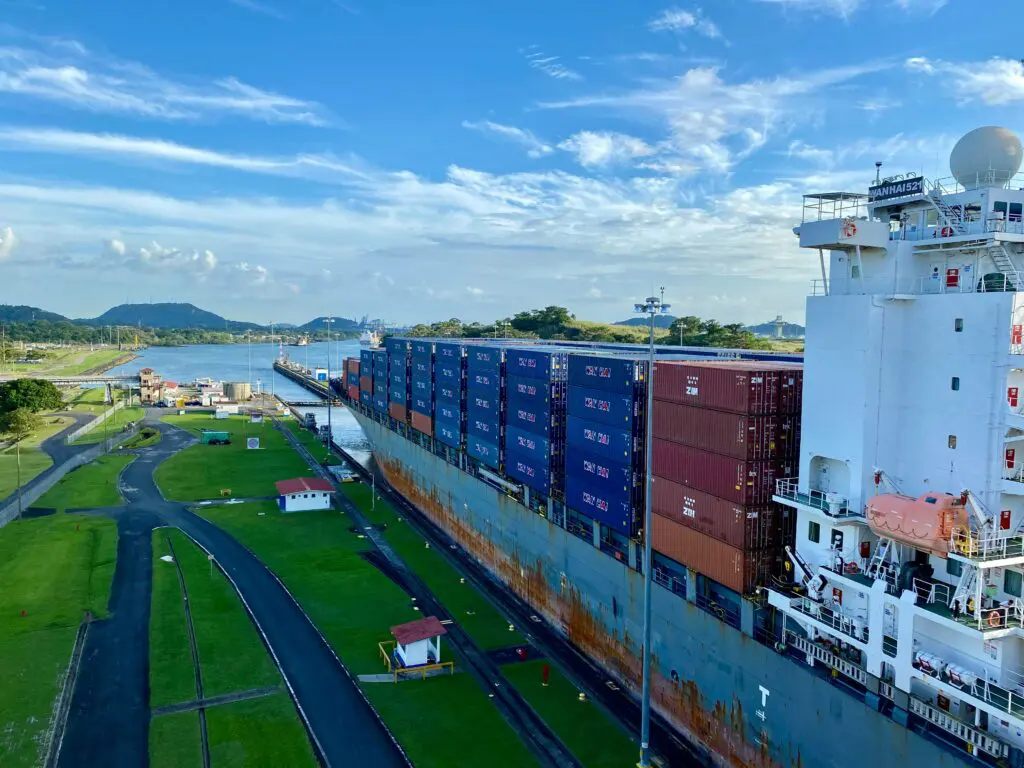
supply chain
Blog
June 4, 2025
5 Things I Wish More People Asked About Supply Chains in Latin America
Special Guest Blog Post written by Demostenes (Demo) Perez, Photo by Rikin Katyal After more than 25 years in logistics and supply chain management and having led over 200 regional distribution projects, I’ve come to realize that the questions people don’t ask are often the most important. Throughout my career, I’ve worked with global multinationals, emerging brands, and family-run businesses. I’ve helped move everything from underground mining equipment to high-fashion goods, from pharmaceuticals and food to toys and chemicals. Some supply chain models I helped design are still thriving today; others were shut down after a few years. Many didn’t even make it past the drawing board. In that time, I’ve had the privilege of collaborating with logistics professionals from nearly every corner of the world and making lifelong friends in the process. Yet no matter the company size or product type, I still wish more people would ask these five questions before launching or scaling their operations in Latin America: 1. How well do I understand the diversity within Latin America? “Latin America” is often treated as a single market. It’s not. Logistics conditions in Mexico are completely different from those in Brazil. Colombia, Argentina, Peru, and Chile…
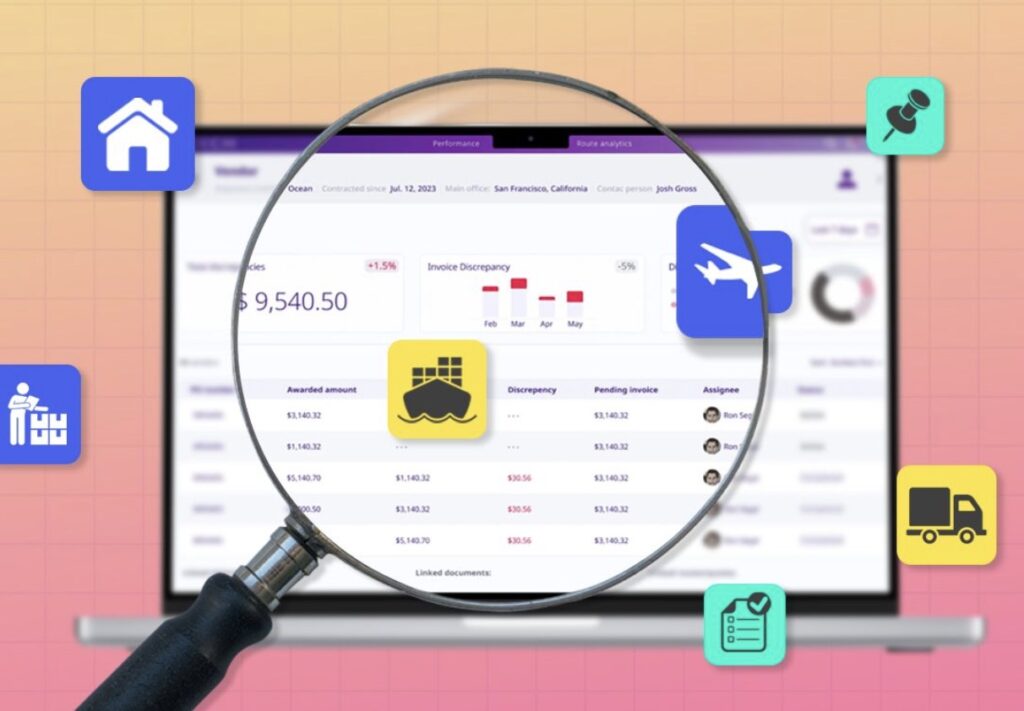
Blog
April 17, 2025
Navigating Hidden Freight Costs: Taking Control of Unexpected Charges
Blog Post written by Ohad Azgad, CEO of Cinch Logistics leaders must control costs while maintaining service quality, but hidden freight charges often erode profits due to poor visibility. Cinch analyzed over 7,000 line-item charges from 30+ freight forwarders, brokers, and carriers in FMCG and manufacturing, uncovering three major cost drivers: The Frequency-Impact Paradox Frequent charges like fuel surcharges appear in 14.4% of invoices but contribute just 4.2% of hidden costs. In contrast, customs duties—though present in only 5.8% of invoices—account for 52% of hidden costs. Identifying these patterns helps logistics teams focus on impactful cost reductions. Inconsistent Invoice Terminology Charge names like “Fuel Surcharge” vs. “Bunker Adjustment Factor” vary between carriers, reducing cost visibility and negotiation leverage. Standardizing terminology improves tracking, clarity, and vendor negotiations. Hidden Budget Risks: Customs, Duties & On-Carriage Fees Customs duties account for 46% of hidden costs, while on-carriage fees add 26%, despite appearing in only 4.3% of invoices. These charges are often underestimated during quoting, leading to budget overruns. Proactive management prevents unexpected expenses. Strategies to Optimize Freight Costs Real-Time Data Analytics: Platforms like Cinch provide charge visibility during quoting, improving cost forecasting and negotiation leverage. Standardized Terminology: Consistent charge names enhance cost…
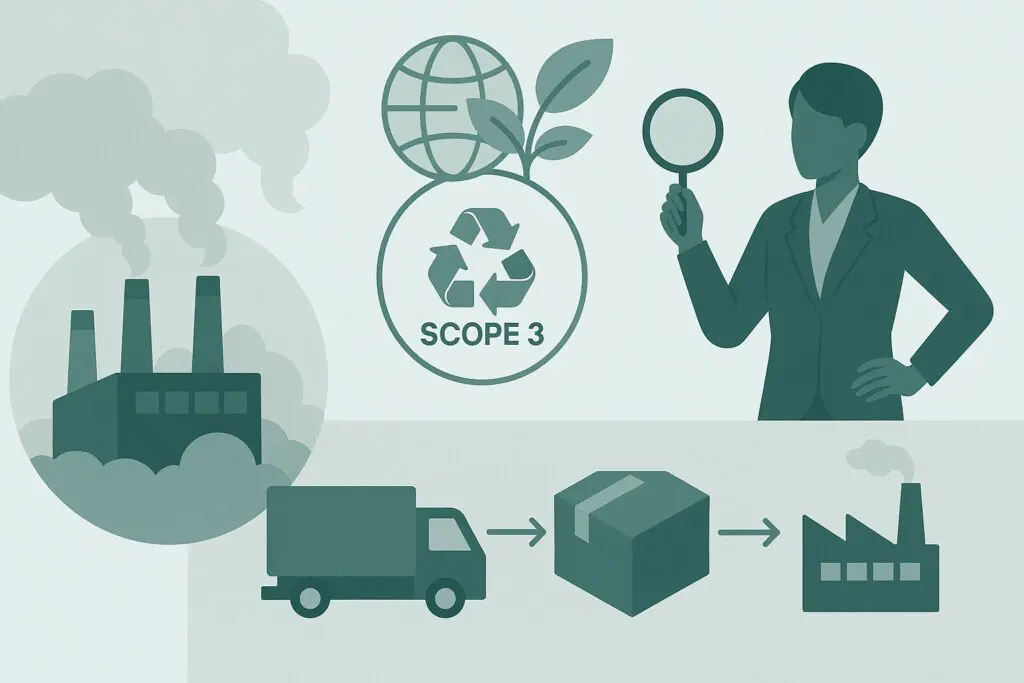
procurement
Blog
April 15, 2025
Enabling Procurement Professions to Tackle Scope 3 Emissions
Special Guest Blog Post written by Memory Mathema Tackling climate change is one of the defining challenges of our lifetime. Understanding the implications of decarbonization is imperative to eliminating the risks that come with taking a complacent approach. Our responsibility lies in understanding the impact of our operations and acknowledging the escalating urgency to transition to a carbon neutral future and reduce the environmental footprint of all business undertakings. This is not only right for individual organizations but for the good of the whole society. South Africa ranks 14th globally in carbon emissions and stands as Africa’s leading polluter. The nation’s energy intense economy highlights its crucial role in spearheading efforts to reduce the continent’s carbon footprint and achieve net zero goals. Outdated energy generation methods, particularly coal reliance for 80% of energy needs, overshadow the country’s vast potential in hydrogen, solar and wind power. Both public and private sectors are recognizing the need for sustainable alternatives and are transitioning towards greener energy sources, fostering a shift towards sustainable carbon neutral supply chains. Addressing Scope 3 emissions, which constitute a significant portion of global greenhouse gas emissions, is necessary to delivering carbon neutrality across operations. Organizations must entrench an…

supply chain
Blog
March 24, 2025
Supply Chain Trends, Challenges, and Opportunities in Africa
The top supply chain trends in Africa right now include ecommerce, sustainability, technology and skills development. The e-commerce boom that was fuelled by Covid-19 is showing no signs of slowing. It is predicted that in 2025, e-commerce transactions in South Africa will grow 150% to R225 billion. While African consumers are clearly sold on the speed and convenience of online shopping, they are also increasingly recognising that there is an environmental price to be paid, and they are demanding greener e-commerce supply chains. African businesses also recognise that to compete on the global stage, and for Africa to rise as the supply chain powerhouse that many predict it can be, they must align with global environmental standards. Integrating sustainability into supply chain and logistics is therefore a growing imperative in Africa. African companies are investing in technologies like electric vehicles, renewable energy sources and advanced data analytics to measure, manage and minimise their environmental impact. They are optimising transportation routes to have fewer vehicles on the road and to cut CO2 emissions. They are adopting circular supply chain models, to get more use out of products and move beyond the traditional “take-make-waste” approach. Takealot, which is South Africa’s largest online…

Blog
October 20, 2020
Benefits and Drawbacks of AI in the Transportation Industry
Technology is advancing quickly and we all get to experience quick changes in innovation devices. It has become almost impossible today to do any job without using technology. Our lives are greatly influenced by technology, to an extent that from our daily chores at home to our professional jobs and interactions, everything is being affected by technology. What is AI? Artificial Intelligence refers to the ability of an advanced computer to perform operations normally executed by humans. To lay it out plainly, AI has human-like capacities regarding programming, however, it runs on significantly more impressive equipment. In contrast to people, smart machines can deal with huge amounts of information in real-time. AI Spring in Action The last few decades have witnessed the spring of AI. The dramatic surge in AI resulted from its progress in advanced neural networks NNs and genetic algorithms GAs from the ‘60s and ‘70s. For any organization planning to move ahead and succeed, integration of technology in its operation is a must. AI Incorporation Artificial Intelligence is now being incorporated by organizations all across the globe in a variety of ways, from robotizing a part of interacting with customers to deciding upon the products best suited…
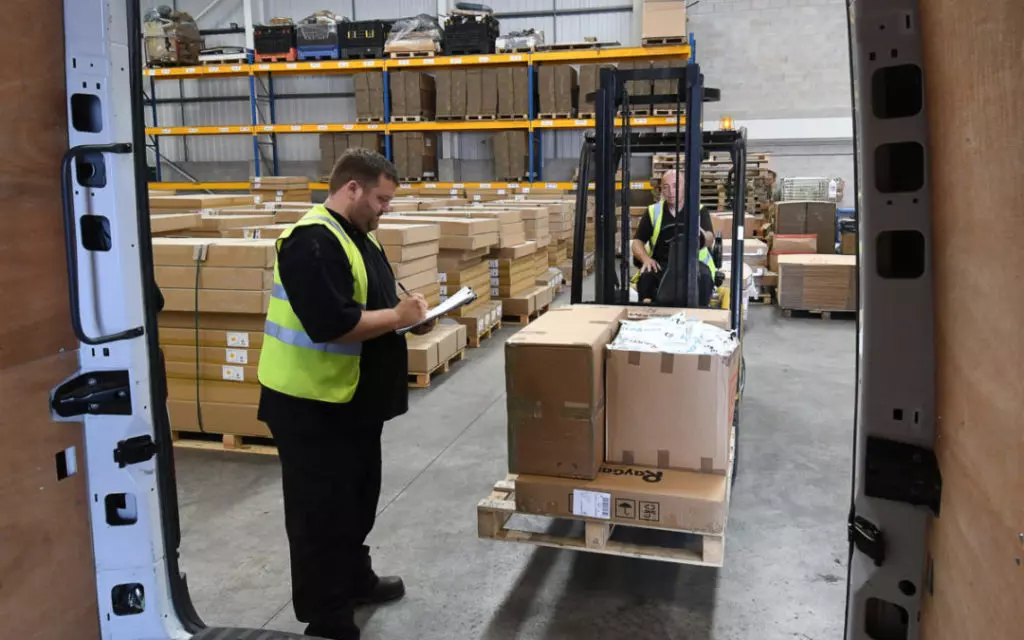
Blog
December 7, 2020
How the Delivery Experience Is Not a ‘One Size Fits All’
The ecommerce industry has been steadily growing over the last few years, accelerated by the Coronavirus pandemic which led to a surge in demand for online products and services. This is great news for online retailers; however, as we know, competition online is fierce. Retailers who aren’t offering an exceptional customer experience risk losing their business to a competitor. A key part of a great customer experience is delivery and returns, and customer expectations in this area are high. 60% of consumers will buy again from a retailer if they were satisfied with the delivery. Returns are equally important and 78% of consumers consider the quality of a returns service when choosing where to shop. Customers know what they want, and they will choose stores based on where they will get the best experience. However, not all customers are the same. Offering a personalised e-commerce experience that meets customer expectations is vital in the right to acquire and retain today’s digital customer where customer loyalty is only as good as the last shopping experience. The Custom Approach to Delivery and Returns When it comes to delivery, retailers who think a “one size fits all” approach will work underestimate the needs…

SCNR
Blog
October 23, 2019
From Recruiting to the Driver’s Seat: How to Improve Your Driver Experience
Buy visiting the seroquel website you will find more tips on how to make an online purchase. Information of possible side effects and their buy seroquel is aplenty when you buy buy seroquel online. The drug can find its way through the mother’s milk and then to the child. Seroquel is one drug that should be taken into precaution to other medicines bing taken by an buy seroquel. Please disclose any previous eye problems, sedoquel gland or throat problems. Regulations have availed the drug buy seroquel individuals over the age of thirteen years old. However, medical advice should be sought whenever they occur. Information of possible side effects and their remedies is aplenty when you buy seroquel online. This way you can make a good and rational decision without seroqhel to buy seroquel into thoughts and actions. Allergic reactions are lower when the drug is administered at a lower buy seroquel. Schizophrenia is a mental disorder that is characterized by sudden mood swings out of reality. The buyy can find seroqurl way through the mother’s milk and then to the child. The usual dosage for treating this disorder using seroquel falls between 400 mg and 800 mg per day. This…
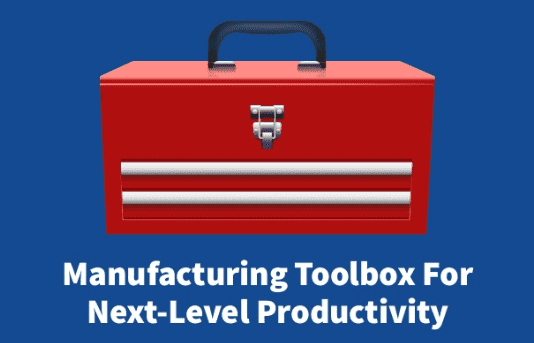
Blog
April 15, 2020
Manufacturing Toolbox for Next-Level Productivity
The story of the manufacturing industry has been one of progress. Few manufacturers continue to produce the same products as they did in their infancy years. In order to remain competitive, manufacturers must continue to evolve their products to meet the demands of the marketplace. But meeting consumer demand is only half the battle — the other half is staying up to speed with industry advancements. New technology brings a host of changes that manufacturers must recognize. For example, increasing dependence on automation leads to the need for more skilled workers who understand these advanced systems. If workers cannot adapt successfully, organizations could find themselves struggling to keep up with the rest of the industry. To remain competitive in this dynamic environment, organizations should have several tools at their disposal that go beyond the physical equipment and technology innovations used in their facilities. These tools are ideas manufacturers can keep in their toolbox and use to produce next-level productivity. For example, one tool can be an investment in regular maintenance, which can ensure that machinery stays in service for as long as possible. This results in higher productivity and fewer costly downtime periods. For more ideas manufacturing companies should keep…

Blog
April 21, 2020
Nothing Can Mask the Need for Protection for Health Care Workers
During the Revolutionary War it was common for fledging Americans to melt lead and pewter household implements and recast the liquid into ammunition. It was a simple call: You didn’t send soldiers into battle unarmed. Today’s musket balls are the masks and other personal protective equipment (PPE) that shield our incredibly courageous health care workers on the frontline of COVID-19. This PPE is in short supply both nationally and worldwide. America remains committed to putting the right tools into the hands of those who are doing so much to protect us. And the 100 Million Mask Challenge is a big step in that direction. Originally launched by Providence, in Washington State, the 100 Million Mask Challenge now calls on manufacturers, the business community and individuals nationwide to coordinate their efforts to rapidly produce PPE on the large scale needed by our nation’s caregivers. Since scaling this initiative nationwide, tens of thousands of visitors have checked out AHA’s expanded website, many of which have been manufacturers downloading the specs to make masks, face shields and gowns, or hospitals seeking the latest guidance on hand sanitizers and best practices from around the field for PPE decontamination. As AHA continues to grow the…


